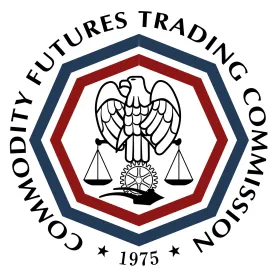The Commodity Futures Trading Commission (CFTC) voted to adopt new rules on position limits (Final Rules)1 in an open meeting on October 15. Once effective, the Final Rules will implement one of the remaining key provisions of Title VII of the Dodd-Frank Wall Street Reform and Consumer Protection Act (Dodd-Frank), which required the CFTC to adopt position limits to the extent that those limits were deemed “necessary” for purposes of “diminishing, eliminating, or preventing” excessive speculation.2
In adopting the Final Rules, the CFTC determined position limits were necessary for the 25 core referenced futures contracts and for futures and options contracts linked to such contracts, and for the spot month for all 25 core referenced futures contracts and for non-spot months, solely for the legacy core referenced futures contracts.
Over the past decade, the CFTC has proposed various rules on position limits,3 including position limits rules that were adopted in 20114 and subsequently vacated by a federal district court in 2012.5 In December 2016, the CFTC adopted final rules related to the aggregation of positions and accounts to assess compliance with speculative position limits, as well as to add a potential exemption to such requirements for entities within a group that trade independently of each other and have procedures and controls to ensure such independence.6
The Commissioners voted 3-2 in favor of the Final Rules, with Chairman Tarbert and Commissioners Brian Quintenz and Dawn Stump voting in favor and Commissioners Rostin Behnam and Dan Berkovitz dissenting.
During his term at the CFTC, Chairman Tarbert has been vocal in describing this position limits rulemaking effort as a top priority,7 and staff at the CFTC’s Division of Market Oversight have been hard at work for more than a year on crafting the new position limits rules.8
Brief Summary
As described in greater detail in subsequent sections of this Advisory, the CFTC’s Final Rules address the following:
-
Federal position limits for 25 contracts. The Final Rules modify existing spot month, single month and all-months-combined position limits for nine “legacy” futures contracts on certain agricultural products9 and adopt new spot month position limits for 16 new, “non-legacy” futures contracts, including additional agricultural products, and certain metals and energy products. Position limits apply to “referenced contracts,” which is a term defined to include any of the 25 “core” referenced futures contracts, any contract that is directly or indirectly linked to, or that has a pricing relationship with, one of the 25 core referenced futures contracts, and any “economically equivalent swap.”
-
Economically equivalent swaps. Under the Final Rules, federal position limits apply to an “economically equivalent swap,” which is a term defined narrowly to include swaps with “identical material” contractual specifications, terms and conditions as a referenced contract.
-
Exemptions from federal position limits. The Final Rules modify the bona fide hedge exemption by, among other things, expanding from six to 11 the number of self-effectuating enumerated bona fide hedges and by liberalizing the terms of some existing enumerated hedges. The Final Rules also include an expedited review and approval regime for market participants to exceed federal position limits for non-enumerated bona fide hedging transactions or positions. In addition, the Final Rules adopt a “spread transaction” exemption, which is self-effectuating for federal position limit purposes.
-
Exchange-set position limits and exemptions. Similar to the existing regulatory framework, the Final Rules prohibit exchanges from adopting position limits that are more lenient than any limit set for the same futures contract at the federal level. For contracts with no federal limit, the Final Rules provide exchanges with greater flexibility in setting position limits or position accountability levels.
-
Forms 204 and 304. Under the Final Rules, hedgers are no longer required to file Form 204 or Parts I and II of Form 304 on a monthly basis.
Some requirements in the Final Rules—such as the new limits on the legacy agricultural futures contracts—will become effective 60 days after publication of the rule in the Federal Register, which as of this date of this Advisory has not occurred. A number of the requirements in the Final Rules have a general compliance date of January 1, 2022, and later compliance date of January 1, 2023 with respect to swaps-related requirements and the elimination of previously granted risk management exemptions. (See Appendix 1 to this Advisory for a table of relevant compliance dates.)
The Finals Rules
New Federal Position Limits
The Final Rules set forth federal position limits applicable to 25 different “core” referenced futures contracts. These 25 core referenced futures contracts consist of nine “legacy” agricultural contracts10 and 16 non-legacy contracts, including seven additional non-legacy agricultural contracts,11 five metals contracts12 and four energy contracts.13
The nine legacy agricultural contracts are subject to both spot month and non-spot month limits. In contrast, the 16 non-legacy contracts are subject to spot month federal position limits but are not subject to non-spot month federal positon limits.
The limits apply to the 25 specific core referenced futures contracts themselves, futures contracts and options on futures contracts directly or indirectly linked to those specified contracts, and economically equivalent swaps (collectively referred to in the Final Rules as the “Referenced Contracts”) computed on a futures-equivalent basis. (“Exemptions From Federal Position Limits” subsection below provides a more detailed discussion on economically equivalent swaps.)
The spot month limit for each of the 25 contracts is set at or below 25 percent of estimated total deliverable supply for the referenced commodity. The deliverable supply estimates were calculated based on data provided by the exchange listing the contract, which data was verified by the CFTC. Generally, the spot month contract limits applicable to legacy agricultural contracts have increased substantially compared to the existing limits under current CFTC rules.14
All spot month limits are separately calculated with respect to cash-settled and physically settled positions; as such, in the spot month, a market participant can net positions within but not across each settlement category.
In addition, with respect to NYMEX Henry Hub Natural Gas Referenced Contracts, a 2,000 spot month contract limit applies separately (1) to physically settled contracts; (2) to cash-settled contracts on a per exchange basis (presently NYMEX, Nodal Exchange and ICE Futures U.S.); and (3) to over-the-counter (OTC) cash-settled economically equivalent swaps. Accordingly, a market participant may hold up to 2,000 physically settled NYMEX Henry Hub Natural Gas Contracts and up to 8,000 cash-settled NYMEX Henry Hub Natural Gas Contracts in the spot month, calculated on a futures-equivalent basis.15
With respect to the non-spot month limits for legacy agricultural contracts, the limits are set at 10 percent of open interest for the first 50,000 contracts, with an increase of 2.5 percent of open interest thereafter. Similar to the spot month limits, the non-spot month limits for the legacy agricultural contracts are generally higher than existing levels.16 In contrast to the requirements with respect to spot month position limits, cash-settled and physically settled positions can be netted to determine compliance with non-spot month limits.
While the Final Rules set limits for non-legacy contracts for the spot month only, exchanges are required to establish limits or accountability levels in non-spot months for these contracts and may continue to adopt speculative position or accountability limits in connection with non-core referenced futures contracts, as described more fully below.
Economically Equivalent Swaps
As required by Dodd-Frank,17 the CFTC adopted federal position limits for economically equivalent swaps in the Final Rules. In effect, a market participant would be required to add these swaps to (or net these swaps against) its other Referenced Contracts in the same commodity for the purpose of determining the participant’s aggregate positions for federal position limits.
Consistent with the proposed definition, the Final Rules narrowly define “economically equivalent swaps” in CFTC Regulation 150.1 as swap contracts with “identical material” contractual specifications, terms and conditions to a Referenced Contract. Material specifications, terms and conditions are those provisions that drive the economic value of a swap, including the underlying commodity (including commodity reference price and grade differentials), maturity/termination dates, settlement type, etc.
The final definition disregards any differences with respect to: (1) lot size or notional amount specifications; (2) delivery dates diverging by less than one calendar day for physically settled swaps (two calendar days for natural gas); (3) or post-trade risk management arrangements (such as clearing or margin arrangements); (4) business day or holiday conventions; and (5) choice of law. Thus, swap contractual terms, provisions or terminology such as ISDA terms and definitions that are unique to swaps are not considered material under the Final Rules.
As a consequence of this more narrow definition, financially settled swaps will not be economically equivalent to Referenced Contracts that are physically settled. In practice, this definition should be somewhat helpful to market participants since fewer swaps will be subject to federal limits. This narrower definition also will mean fewer swaps can be netted against futures contracts subject to federal position limits.
As proposed, market participants will have the discretion to make a determination of whether a swap falls within the economically equivalent swap definition as long as they make a reasonable, good faith effort in reaching their determinations. The CFTC expressed again its view that market participants are best positioned to make this determination.
The Final Rules also note, however, that if a market participant devises a swap transaction in such a way to evade the definition of economically equivalent swap and, thus, the imposition of position limits on that transaction, the market participant’s activities in this regard would bring that swap transaction within scope for federal position limits.
In response to criticism from some commenters that these determinations may lead to manipulation, the CFTC adopted a new provision to the economically equivalent swap definition to clarify that the CFTC may determine on its own initiative whether any swap or class of swaps meets the economically equivalent swap definition.
The Final Rules also clarify that instruments that are exempt from the CFTC’s jurisdiction or are not otherwise deemed to be swaps under the CEA and CFTC regulations are incapable of being economically equivalent swaps.
Exemptions From Federal Position Limits
1. Definition of Bona Fide Hedging
Similar to the existing position limits regulatory framework, the Final Rules provide for exemptions from federal position limits for bona fide hedge transactions and positions. As set forth in the Final Rules, the definition of “bona fide hedging transaction or position” is nearly the same as the existing definition (with key differences noted in italics below). In particular, a bona fide hedging transaction is defined as a transaction or position in a physical commodity derivatives contract that:
-
always represents a substitute for transactions or positions in a physical marketing channel;
-
is economically appropriate to reduce price risks relating to a commercial enterprise; and
-
arises from the potential change in the value of a person’s assets, liabilities or services.
The definition also has been revised to include pass-through swaps, offsets of pass-through swaps and offsets of qualifying swaps positions under specified circumstances.
In contrast to the existing definition, the Final Rules clarify that a bona fide hedging transaction or position must always be connected to a transaction in a physical marketing channel under the first prong of the definition. As a result, therefore, the “risk management exemption” has been effectively eliminated, and market participants are no longer able to treat a transaction or position entered into for risk management purposes as a bona fide hedge unless the transaction or position qualifies as an offset of a pass-through swap or an offset of a qualifying swaps position.
The Final Rules also insert the word “price” in the second prong of the definition to clarify that the word “risks” refers solely to “price risks.”
As described in greater detail in the subsections below, bona fide hedge exemptions generally fall into two categories: enumerated and non-enumerated. Enumerated bona fide hedge exemptions are self-effectuating, whereas non-enumerated bona fide hedge exemptions require approval.
2. Enumerated Bona Fide Hedging
The Final Rules expand the list of enumerated bona fide hedges. In particular, under the Final Rules, the list of enumerated bona fide hedge exemptions includes (with new exemptions in italics) the following:
-
hedges of inventory and cash commodity fixed-price purchase contracts;
-
hedges of cash commodity fixed-price sales contracts;
-
hedges of offsetting unfixed-price cash commodity sales and purchases;
-
hedges of unsold anticipated production;
-
hedges of unfilled anticipated requirements for processing, manufacturing, use or resale;
-
hedges of anticipated merchandising;
-
hedges by agents responsible for merchandising cash positions;
-
hedges of anticipated mineral royalties;
-
hedges of anticipated receipts or payments under an executed contract for services;
-
offsets of commodity trade options that meet the requirements of CFTC Regulation 32.3; and
-
cross-commodity hedges.
(A more detailed discussion of these enumerated bona fide hedge exemptions is set forth in Appendix 2 of this Advisory.)
Some overlap exists between the different categories of enumerated bona fide hedges, and in the adopting release, the CFTC acknowledges that market participants may rely on more than one enumerated bona fide hedge.18
In addition, as noted above, an enumerated bona fide hedge exemption is “self-effectuating” for federal position limit purposes, and a market participant that qualifies for an enumerated bona fide hedge would not be required to request prior approval from the CFTC in order to hold a hedge position in excess of a federal position limit. However, the practical benefit of this “self-effectuating” exemption is limited given that market participants may still need to request an exemption from the relevant exchange for any limits set by the exchange.
The Final Rules also eliminate the restriction on holding certain enumerated bona fide hedge positions in excess of federal position limits during the last five days of trading. Instead, the Final Rules give exchanges discretion to determine whether to adopt limitations on bona fide hedge exemptions during the last five days of trading (or during the spot month if less than five days).
3. Non-Enumerated Bona Fide Hedging
The CFTC also approved an expedited review and approval regime for market participants to exceed federal position limits for a non-enumerated bona fide hedging transaction or position. Under this regime, a market participant may choose whether to apply separately to each of the CFTC and the relevant exchange or, alternatively, apply indirectly to the CFTC through the applicable exchange in one streamlined process.
If an exchange approves the non-enumerated hedge exemption through the streamlined process, the CFTC by its full Commission (not by staff) will generally have ten days to reject the exchange’s determination, after which the hedge exemption would be valid for both exchange and CFTC purposes. In the interim, once an exchange approves a non-enumerated hedge exemption, a market participant could exceed the federal position limit during the CFTC’s 10 business-day review period.
At any point during the CFTC’s 10 business-day review period, the CFTC may stay the application for an additional 45 days to provide additional time to analyze the application and/or request additional materials. If the CFTC stays the application and the applicant has not yet exceeded federal position limits, then the applicant would be prohibited from exceeding the position limits during the stay process. However, if the CFTC stays the application and the applicant already has exceeded federal position limits, then the applicant may continue to maintain the position unless the CFTC notifies the exchange or the applicant otherwise. In any event, if the CFTC subsequently denies the exemption, the market participant would have to liquidate positions in excess of the speculative position limit within a commercially reasonable amount of time.
Under exigent circumstances, market participants may also apply retroactively for an enumerated hedge exemption by applying within five business days of exceeding a speculative position limit. Under this process, the CFTC would have two business days to reject an exchange’s approval of a non-enumerated hedge exemption.
Once a non-enumerated bona fide hedge exemption has been approved, the market participant must renew the exemption with the applicable exchange on an annual basis.
4. Measuring Risk on a Gross or Net Basis
The Final Rules also clarify that market participants generally may hedge positions either on a gross basis or on a net basis, provided that the market participant has done so over time in a consistent, non-evasive manner. The use of gross or net hedging applies to both enumerated and non-enumerated exemptions at the federal level.
5. Spread Transactions
The Final Rules provide for an exemption from federal position limits for “spread transactions” as defined in the rules. The following qualify as “spread transactions” under the Final Rules:
-
intra-market spreads;
-
inter-market spreads;
-
intra-commodity spreads;
-
inter-commodity spreads;
-
calendar spreads;
-
quality differential spreads;
-
processing spreads;
-
product or by-product differential spreads; and
-
futures-option spreads.
A spread transaction exemption is self-effectuating for purposes of federal position limit purposes. However, as with bona fide hedge exemption generally, market participants must separately apply to the applicable exchange for a spread exemption from any limits set by the exchange.
Exchange-Set Position Limits and Exemptions.
1. Contracts Subject to Federal Position Limits
Similar to the existing regulatory framework, the Final Rules prohibit exchanges from adopting position limits that are more lenient than any limit set for the same contract at the federal level. Exchanges may grant exemptions from the exchange-set position limits so long as the exemption is recognized by the CFTC for federal position limit purposes (e.g., an enumerated bona fide hedge exemption).
2. Contracts Not Subject to Federal Position Limits
In addition, with respect to contracts with no federal limit, the Final Rules provide exchanges with greater flexibility in setting position limits or position accountability levels by, among other things, permitting the exchanges to adopt alternative approaches that are “necessary and appropriate to reduce the potential threat of market manipulation or price distortion of the contract’s or the underlying commodity’s price or index.” The Final Rules also allow the exchanges flexibility to grant exemptions from exchange-set position limits.
Forms 204 and 304
Under the Final Rules, market participants are no longer required to file Form 204 or Parts I and II of Form 304 on a monthly basis. Instead, the CFTC will obtain the relevant cash market position information from the relevant exchanges, which, in turn, will obtain relevant information directly from market participants.
Notwithstanding, the Final Rules retain existing Part III of Form 304 (Unfixed-Price Cotton “On Call”), which generally is filed by qualifying merchants and dealers of cotton on a weekly basis.
Commissioner Comments
In heralding his support for the Final Rules, Chairman Tarbert acknowledged the long time the CFTC has wrestled with proposed position limits rules since the adoption of Dodd-Frank. Quoting Ralph Waldo Emerson, “Life is a journey, not a destination,” Chairman Tarbert noted, referencing Mr. Emerson, “Lucky for him, his journey did not involve position limits. This rule has been one of the most difficult undertakings in CFTC history.”19
In a supporting statement, Commissioner Quintenz stated his belief that “[t]he new position limits regime will provide commercial market participants with sufficient flexibility to hedge their risks efficiently and will promote liquidity and price discovery.”20 Commissioner Stump voted for the Final Rules, but noted that her preference would have been to leave all responsibility for approving non-enumerated hedges with exchanges.21 However, given that market participants generally believed the process in the Final Rules for approval of non-enumerated hedges was “reasonable, balanced and workable”, she supported it too.22
Commissioner Berkovitz dissented from the approval of the Final Rules because in his view, they failed “to achieve the most fundamental object of position limits: to prevent the harms arising from excessive speculation.”23 This is because, he said, for the approval process involving non-enumerated hedges, the Final Rules demote the Commission “from head coach to Monday-morning quarterback” and declare “that the players on the field are the referees. In this arena, the public interest loses.”24 Commissioner Berkovitz also objected that the Final Rules authorize market participants to violate federal position limits and obtain retroactive hedge exemption approvals.25
Commissioner Behman also dissented for the principal reason that the Final Rules relegate the Commission to “a back seat when it comes to administration and oversight” of non-enumerated hedge exemptions.26 He claimed it was not appropriate to delegate the primary responsibility for approving non-enumerated hedge exemptions to exchanges because “even if we operate as a team, our incentives and interests are not fully aligned.”27
1 A voting draft of the Final Rules is available on the CFTC’s website at https://www.cftc.gov/media/5066/votingdraft101520PositionLimits/download (the “Voting Draft”). As of the date of this Advisory, the Final Rules have not been published in the Federal Register.
2 Section 4a(a)(1) of the Commodity Exchange Act (CEA).
3 81 Fed. Reg. 96704 (Dec. 30, 2016); 81 Fed. Reg. 38458 (June 13, 2016); 78 Fed. Reg. 75680 (Dec. 12, 2013); 76 Fed. Reg. 4752 (Jan. 26, 2011).
4 76 Fed. Reg. 71626 (Nov. 18, 2011).
5 Int’l Swaps & Derivatives Ass’n v. U.S. Commodity Futures Trading Comm’n, 887 F. Supp. 2d 259 (D.D.C. 2012).
6 See “CFTC Finalizes Aggregation Rules and Re-Proposes Position Limits Rule,” Katten Advisory (December 19, 2016): https://katten.com/CFTC-Finalizes-Aggregation-Rules-and-Re-Proposes-Position-Limits-Rule.
7 See US Senate Committee on Agriculture, Nutrition, & Forestry, Nomination Hearing of Heath P. Tarbert (Mar. 13, 2019).
8 See id. See also US Senate Agriculture, Nutrition, & Forestry Committee Hearing, “State of the CFTC: Examining Pending Rules, Cryptocurrency Regulation and Cross Border Agreements” (Feb. 15, 2018) (Former Chairman Giancarlo’s responses to questions from US Senator Debbie Stabenow).
9 The Final Rules eliminate the single month and all-months-combined distinction and instead establish a non-spot month concept.
10 CBOT Corn (C), CBOT Oats (O), CBOT Soybeans (S), CBOT Wheat (W), CBOT Soybean Oil (SO), CBOT Soybean Meal (SM), MGEX Hard Red Spring Wheat (MWE), ICE Cotton No. 2 (CT), and CBOT KC Hard Red Winter Wheat (KW).
11 CBOT Rough Rice (RR), ICE Cocoa (CC), ICE Coffee C (KC), ICE FCOJ-A (OJ), ICE U.S. Sugar No. 11 (SB), ICE U.S. Sugar No. 16 (SF), and CME Live Cattle (LC).
12 COMEX Gold (GC), COMEX Silver (SI), COMEX Copper (HG), NYMEX Platinum (PL), and NYMEX Palladium (PA).
13 NYMEX Henry Hub Natural Gas (NG), NYMEX Light Sweet Crude Oil (CL), NYMEX New York Harbor ULSD Heating Oil (HO), and NYMEX New York Harbor RBOB Gasoline (RB).
14 With respect to spot month limits, the only legacy contract for which the limit remains unchanged is CBOT Oats (O).
15 Separately, higher spot month limits are available to market participants that do not hold positions in spot month physically settled NYMEX Henry Hub Natural Gas Contracts. More specifically, under CFTC Regulation 150.3(a)(4), these market participants may hold up to 10,000 cash-settled contracts per exchange and, separately, 10,000 cash-settled OTC economically equivalent swaps, calculated on a futures-equivalent basis.
16 With respect to non-spot month and all months’ limits, the limit for CBOT Oats (O) is again unchanged, as are the limits for KC Hard Red Winter Wheat (KCW) and MGEX Hard Red Spring Wheat (MWE).
17 CEA Section 4a(a)(1).
18 Voting Draft at 90.
19 Opening Statement of Chairman Heath P. Tarbert in Support of Final Rule on Position Limits, available at https://www.cftc.gov/PressRoom/SpeechesTestimony/tarbertstatement101520b.
20 Supporting Statement of Commissioner Brian Quintenz Regarding Position Limits for Derivatives, available at https://www.cftc.gov/PressRoom/SpeechesTestimony/quintenzstatement101520c.
21 Statement of Commissioner Dawn D. Stump Regarding Final Rule: Position Limits for Derivatives, available at https://www.cftc.gov/PressRoom/SpeechesTestimony/stumpstatement101520.
22 Id.
23 Dissenting Statement of Commissioner Dan M. Berkovitz Regarding Final Rule on Position Limits for Derivatives, available at https://www.cftc.gov/PressRoom/SpeechesTestimony/berkovitzstatementb101520b.
24 Id.
25 Id.
26 Statement of Dissent of Commissioner Rostin Behnam Regarding Position Limits for Derivatives, available at https://www.cftc.gov/PressRoom/SpeechesTestimony/behnamstatement101520c.
27 Id.








 />i
/>i

